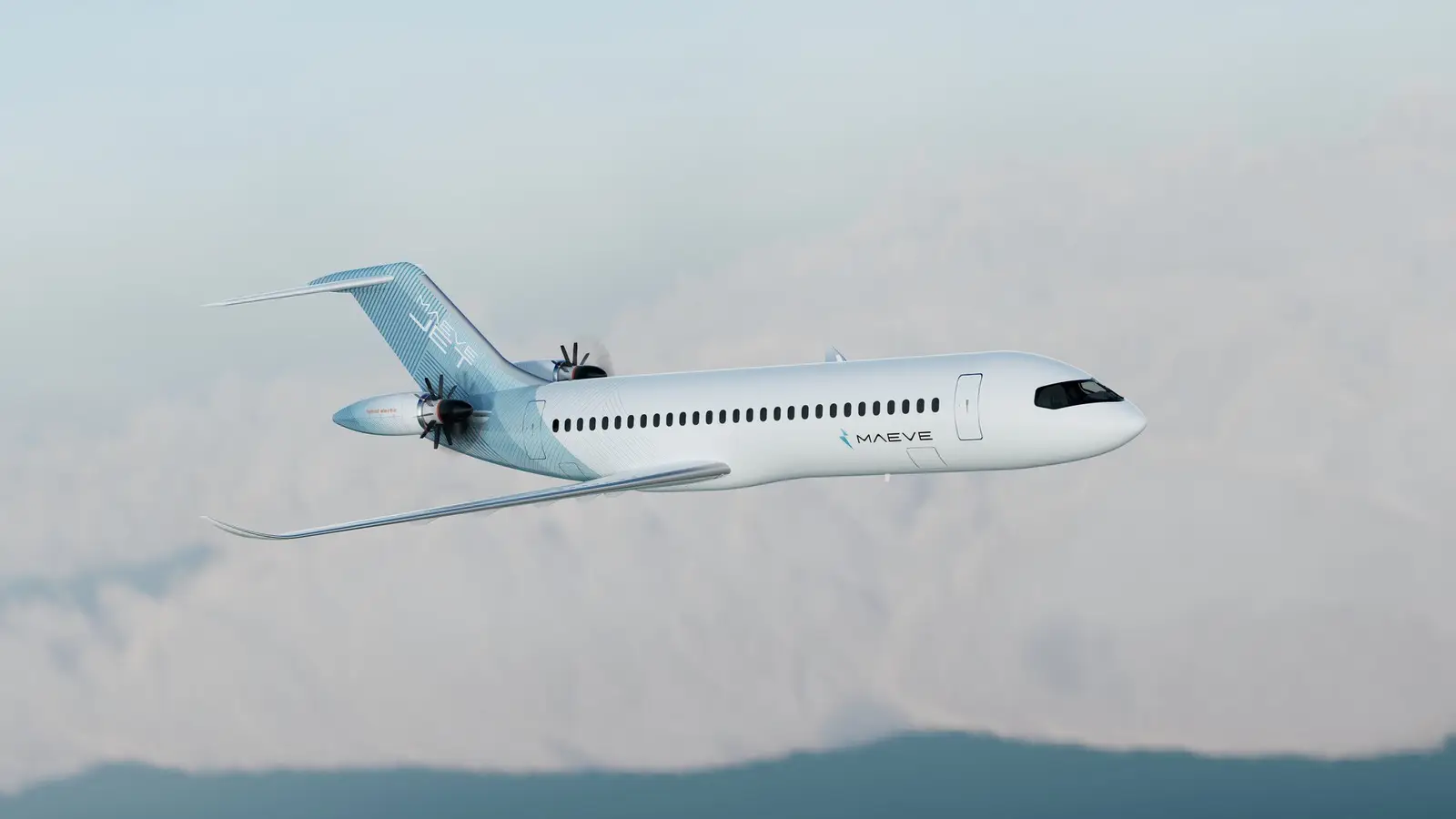
Delta Air Lines has announced a partnership with Munich-based startup Maeve Aerospace to accelerate development of a hybrid-electric regional aircraft, dubbed the “MAEVE Jet.” The move is part of Delta’s Sustainable Skies Lab initiative, aligning with the airline’s decarbonization goals and efforts to reduce emissions across its regional network.
The MAEVE Jet, as envisioned, will carry 76 to 100 passengers in a single-aisle, five-abreast configuration. Maeve Aerospace advertises that its hybrid-electric powerplant, combined with an optimized wing design, could yield cost savings of up to 40% when using conventional jet fuel, and by as much as 95% when using Sustainable Aviation Fuel (SAF).
A Look At The MAEVE Jet
The MAEVE Jet, also known as the MJ 500, is a new regional jet concept being developed by European manufacturer Maeve Aerospace. It’s meant to seat between 76 and 100 seats, which places it in direct competition with the Embraer E175. Maeve has been progressively evolving the concept for years, and it’s likely that this could be close to the final configuration.
The major innovation with Maeve’s new aircraft is the hybrid-electric powerplant. Thrust will come from two open-rotor engines, and according to Maeve, this will save airlines tremendous amounts of fuel and money. Open rotor technology has been considered for numerous aircraft projects in the past (most recently with the successor to the Airbus A320neo), while several companies are working on electric or hybrid electric powerplants for smaller aircraft like air taxis.
This is the first serious effort to combine open rotor technology with hybrid electric propulsion on an aircraft this size. While the design has not been frozen and Maeve is still looking for additional partners, this is one of the most serious efforts for a clean-sheet aircraft in today’s market. The investment from Delta is perhaps Maeve’s most significant announcement to date.
The MJ 500’s Place In The Market (And What It Means For Delta)
While competition between Airbus and Boeing is as intense as ever, there’s a noticeable lack of new developments in the market for regional airliners. Bombardier has fully exited the commercial aircraft market, while Mitsubishi is no longer producing the CRJ. De Havilland is still building a new facility to assemble the Dash 8, and Embraer’s E175-E2 is currently on hold as it is not scope-compliant in the US.
The only major regional airliners in production are the Embraer E175, ATR42-600, and ATR72-600. All of these are prior-generation aircraft, and while they remain in production, they’re hardly efficient by today’s standards. Delta Air Lines is, of course, a major operator of the E175 and essentially has no other choice if it expands its Delta Connection fleet or decides to replace older aircraft.
The Maeve MJ 500 not only promises innovative technology, but it also taps into a market that is lacking innovation and investment. With an advertised three-class (first/business, extra legroom economy, economy) capacity of 76 seats and a 34T Maximum Takeoff Weight (MTOW), the aircraft is clearly developed with US regional airlines in mind, which are the world’s largest operators of regional aircraft.
Broader Marker Prospects For The MJ 500
The MJ 500 has significant promise, but reservations remain about startup manufacturers that may struggle to maintain consistent funding. The airliner industry is capital-intensive and requires scale, which is why there are so few manufacturers. Maeve has already partnered with Mitsubishi and is reportedly looking to find more partners, which would boost its long-term chances of survival.
With a five-abreast layout, the MJ 500’s design is clearly intended to support future growth. The only five-abreast airliner in production today is the far larger Airbus A220, while the Embraer E2, a four-abreast airliner, may have reached its limit in its E195-E2 variant, which matches the A220 in capacity. By going five-abreast, this aircraft will be easier to stretch into a larger version.
With a 100 passenger single class layout, the MJ 500 is advertised to have a range of 950 nautical miles (1,759 kilometers), and a range of 1,450 nautical miles (2,685 kilometers) when configured for US flying. These numbers are limited, but should still be acceptable for regional missions. As a whole, the MJ 500 is a promising aircraft, and its success will most likely depend on whether its manufacturer can survive and support it.



